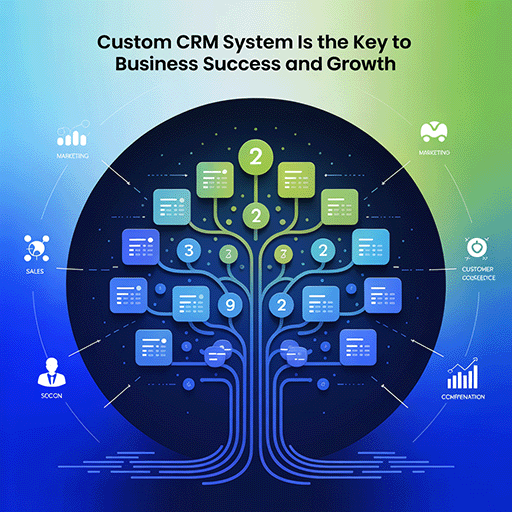In July 2024, the tech industry faced a major crisis when a leading cybersecurity provider caused a global IT outage. This incident affected 8.5 million Microsoft Windows devices, disrupting businesses and governments worldwide. The outage led to widespread disruptions in critical sectors, including airlines, banks, healthcare providers, and retail payment systems. The estimated losses reached $1 billion. This crisis highlights the vital need for robust crisis management plans and cyber resilience in our digital world.
A crisis management plan helps identify potential threats and outlines effective responses. It minimizes damage, ensures business continuity, and protects the company’s reputation. By having a CMP, businesses can maintain operations during crises, reduce uncertainty, and safeguard the well-being of employees and stakeholders.
Read this article to discover the essence of a crisis management plan, its key components, its impact, and how to build one.
I. What is Crisis Management?
A crisis management plan (CMP) is a strategic document that outlines how an organization will troubleshoot unexpected emergencies or crises. Its primary goals are to minimize the negative impact on the organization’s operations and reputation and restore normal operations as quickly as possible.
Key components of a crisis management plan typically include:
- Crisis Identification: Spotting potential threats that could affect the organization.
- Roles and Responsibilities: Assigning tasks and defining roles in the response team.
- Communication Plan: Setting up information sharing for crises, both inside and outside the organization.
- Response Procedures: Outlining the steps to tackle the crisis.
- Recovery Plan: Detailing how the organization will return to normal operations post-crisis.
- Training and Drills: Training all relevant staff and conducting regular drills to test the plan.
Common crisis scenarios that organizations often prepare for include:
- Cyber Attacks: This includes data breaches, ransomware, or other forms of hacking that compromise sensitive information.
- Product Recalls: When a product is defective or dangerous, it must be recalled, but it can damage the company’s reputation and finances.
- Natural Disasters: Events like hurricanes, earthquakes, floods, and wildfires disrupt operations and pose safety risks.
- Organizational Crises: Internal issues such as leadership scandals, financial mismanagement, or significant operational failures go on this list.
- Social Media Discontent: Negative publicity or backlash on social media platforms can quickly escalate and harm a brand’s image.
- Supply Chain Disruptions: Shortages or delays in the supply chain halt production and affect service delivery.
- Legal Issues and Lawsuits: Legal challenges or lawsuits can arise from various sources, including employee disputes, regulatory violations, or customer complaints.
Businesses can not always predict an approaching crisis. Usually, most of the biggest crises, like Covid-19, happen suddenly. However, there are blind spots in crisis management that you need to pay attention to in order to be ready for unexpected disasters.
Software development companies face numerous challenges that can disrupt their operations. But fortunately, there is a solution. A crisis management plan prepares the company for potential data breaches or cyber-attacks and guarantees you have quick and effective responses to minimize damage. It also helps manage communication with clients and the public during crises like major bugs or security vulnerabilities, protecting the company’s reputation.
Moreover, a CMP outlines procedures to maintain or quickly restore critical functions, while minimizing downtime and financial loss. It ensures compliance with legal and regulatory requirements and reduces the risk of legal penalties. A CMP shows readiness for emergencies, boosting client trust in the company. It also includes protocols to keep employees safe, thereby maintaining morale and productivity.

II. The Impact of Not Having a Crisis Management Plan
Since only 49% of companies admit to having a crisis plan in place, we need to discuss the risks that those without one are exposing themselves to. Not having a crisis management plan can have severe consequences for any organization. Here are some key impacts:
- Operational Disruption: Without a plan, unexpected events like natural disasters, cyber-attacks, or power outages can significantly disrupt daily operations.
- Reputational Damage: Failure to respond effectively to a crisis can harm an organization’s reputation and lead to loss of customer trust and loyalty.
- Financial Losses: Crises often result in financial setbacks due to halted operations, legal fees, and recovery costs.
- Legal Complications: Inadequate crisis management can lead to legal issues, especially if the organization fails to meet regulatory requirements or contractual obligations.
- Employee Morale: Without the proper preparations, businesses face chaos and stress among employees, affecting their morale and productivity.
A well-structured crisis management plan helps mitigate these risks by ensuring a swift and effective response to any crisis, thereby preserving the organization’s operations and reputation.
1. Case Studies: Don’t Have Any CMP?
Let’s take a closer look at cases where companies lacked a crisis management plan and faced the consequences.
1.a. Volkswagen Emissions Scandal (2015)
In 2015, it was discovered that Volkswagen had installed software in their diesel engines to cheat emissions tests. This software detected when the car was being tested and altered the engine’s performance to reduce emissions. However, during regular driving conditions, the vehicles emitted up to 40 times the legal limit of nitrogen oxides. The scandal affected around 11 million cars worldwide.
Impacts:
- Financial: Volkswagen faced fines and settlements exceeding $30 billion.
- Reputational: The company’s reputation took a significant hit, which led to a loss of customer trust and a decline in sales.
- Operational: The scandal caused a major overhaul of Volkswagen’s management and operational practices.
1.b. Boeing 737 Max Crashes (2018-2019)
Boeing faced a severe crisis after two crashes involving its 737 Max aircraft: Lion Air Flight 610 in October 2018 and Ethiopian Airlines Flight 302 in March 2019, which resulted in the deaths of 346 people. Investigations revealed that the crashes were caused by a faulty Maneuvering Characteristics Augmentation System (MCAS) that Boeing had not adequately disclosed to pilots.
Impacts:
- Financial: Boeing incurred over $24.8 billion in costs, including compensation to airlines and victims’ families and production halts.
- Reputational: The company’s reputation was severely damaged, causing a loss of customer and regulatory trust.
- Operational: The 737 Max was grounded worldwide for nearly two years, significantly impacting Boeing’s production and delivery schedules.
1.c. BP Deepwater Horizon Oil Spill (2010)
The Deepwater Horizon oil rig, operated by BP, exploded in April 2010, causing a massive oil spill in the Gulf of Mexico. The spill lasted 87 days, releasing millions of barrels of oil into the ocean and causing extensive environmental damage.
Impacts:
- Environmental: The spill caused extensive damage to marine and wildlife habitats, affecting thousands of species.
- Financial: BP faced over $65 billion in cleanup costs, fines, and settlements.
- Reputational: BP’s handling of the crisis was widely criticized, leading to a significant loss of public trust and long-term damage to its brand.
- Operational: The disaster led to stricter regulations and oversight in the oil industry and affected BP’s operations and those of other companies.
1.d. Equifax Data Breach (2017)
In 2017, Equifax, one of the largest credit reporting agencies, experienced a massive data breach that exposed the personal information of 147 million people, including Social Security numbers, birth dates, and addresses.
Impacts:
- Financial: Equifax faced over $1.4 billion in costs related to the breach, including settlements, fines, and legal fees.
- Reputational: The breach severely damaged Equifax’s reputation and led to a loss of consumer trust and a decline in stock value.
- Operational: The company had to overhaul its cybersecurity measures and improve its data protection protocols.
1.e. Pepsi Syringe Scare (1993)
In 1993, Pepsi faced a crisis when reports surfaced that syringes were found in cans of Diet Pepsi. Although the claims were later proven to be a hoax, Pepsi’s initial response was slow and ineffective, leading to widespread public fear and media frenzy.
Impacts:
- Financial: Pepsi experienced a temporary drop in sales and incurred costs related to the recall and investigation.
- Reputational: The company’s reputation was temporarily tarnished, affecting consumer confidence.
- Operational: Pepsi had to implement more stringent quality control measures and improve its crisis communication strategy.
1.f. Samsung Galaxy Note 7 Recall (2016)
In 2016, Samsung faced a major crisis when its Galaxy Note 7 smartphones started catching fire due to battery defects. The company initially issued a recall but failed to effectively manage the situation, leading to further incidents and a second recall.
Impacts:
- Financial: Samsung incurred losses exceeding $5 billion due to the recall, production halt, and compensation to customers.
- Reputational: The crisis significantly damaged Samsung’s brand image and consumer trust.
- Operational: Samsung had to implement stricter quality control measures and improve its crisis management and communication strategies.
These cases highlight the critical importance of having a robust crisis management plan to effectively address and mitigate the impacts of unforeseen events.
2. Consequences
The absence of a crisis management plan can lead to significant fallout for an organization, impacting various aspects such as financial stability, reputation, and operations. Here’s a closer look at these potential consequences:
2.a. Financial Loss
Without a crisis management plan, an organization is ill-prepared to handle unexpected events. The result—substantial financial losses. These can stem from:
- Operational Downtime: Interruptions in business can cause lost revenue and higher recovery costs.
- Legal Penalties: Non-compliance with regulatory requirements during a crisis can lead to fines and legal fees.
- Recovery Costs: Costs for damage control, like repairing infrastructure, compensating victims, and emergency measures.
2.b. Reputational Damage
A crisis can severely tarnish an organization’s reputation, especially if the response is perceived as inadequate or slow. This can result in:
- Loss of Trust: Customers, partners, and stakeholders may lose confidence in the organization’s ability to manage crises effectively.
- Negative Publicity: Media coverage and social media backlash can amplify the damage, making it harder to rebuild the organization’s image.
- Customer Attrition: Dissatisfied customers may switch to competitors, leading to a decline in market share.
2.3. Operational Disruptions
Operational disruptions are inevitable without a well-defined crisis management plan. These can manifest as:
- Supply Chain Interruptions: Disruptions in the supply chain can halt production and delay deliveries.
- Employee Displacement: Lack of clear communication and safety protocols can lead to confusion and decreased productivity among employees.
- Data Loss: Inadequate data protection measures can result in the loss of critical information, further complicating recovery efforts.
Not having a crisis management plan can harm an organization’s finances, reputation, and efficiency. So, it’s crucial to create and test a strong plan. How to do that? Below, you’ll find a guide.
III. How Does Crisis Management Work?
There is no one-size-fits-all crisis management plan. Organizations typically need to develop multiple plans, each tailored to different potential crises. The foundation of any successful crisis management initiative starts with assembling a dedicated crisis management team.
1. Responsibilities and Skills of Crisis Management Team
A crisis management team tasks:
- identifying possible crisis scenarios;
- assessing the resources needed to address them,
- formulating strategies to minimize crisis impact.
Key skills required include:
- a deep understanding of the organization’s operations to quickly detect threats;
- proactive research to stay informed of industry changes;
- strong data analysis abilities to interpret complex information and present it clearly.
2. How to Create a Crisis Management Team
The composition and responsibilities of a crisis management team vary depending on the organization’s needs, legal requirements, and preferences. However, some essential roles are typically included:
Team Leader: The leader directs the crisis response and makes critical decisions. This role is often filled by a manager with strong leadership skills rather than the CEO.
Secretary: This individual documents meetings and decisions to track and record progress on crisis management initiatives.
Communications Coordinator: This person is responsible for keeping stakeholders informed, both internally and externally, with updates on the crisis and how the company is responding.
Finance Officer: The finance officer manages the budget for crisis-related initiatives and ensures wise usage of resources, especially during financial crises.
HR Representative: The HR rep supports employees during crises while handling staffing needs, communication, and employee assistance programs.
IT Consultant: This individual oversees the safety and functionality of internal systems and develops contingency plans for any technical issues that arise.
Legal Advisor: The legal advisor ensures that all crisis management strategies comply with legal obligations and regulations.
3. Steps for Crisis Management
When implementing a crisis management plan, leaders must guide their team through the following steps:
- Containment: The first priority is to contain the crisis and limit its impact. By implementing controls to keep the problem localized, the team prevents further escalation.
- Management: Once containment is achieved, the focus shifts to managing the situation. This involves monitoring the crisis to ensure containment is maintained while maintaining essential business operations to the greatest extent possible.
- Resolution: Finally, the team works to resolve the crisis. This phase demands the most time and resources, as it relies on the team’s collective expertise to develop long-term solutions and return things to normal.

IV. How to Create a Crisis Management Plan
By incorporating these key components, organizations can develop a robust crisis management plan that not only mitigates risks but also enhances their resilience and ability to recover from crises.
-
Risk Assessment: Identifying Potential Threats and Vulnerabilities
Begin by conducting a thorough assessment to identify potential risks that could impact your organization. Gather input from various stakeholders, including employees, management, and industry experts, to categorize risks based on likelihood and impact. Common categories include operational, financial, reputational, and natural disasters. Document these risks in a centralized location for easy reference.
For each identified risk, create tailored response strategies that outline specific actions to mitigate the impact. Consider factors such as resources required, timelines, and responsible personnel. Strategies should include immediate actions, contingency plans, and recovery procedures. Collaborate with team members to ensure that the strategies are realistic and feasible.
This process means the team must identify potential threats and vulnerabilities that could impact the organization. Indeed, 53% of organizations experienced at least one significant disruption in the past year. By understanding these risks, organizations can develop strategies to mitigate them. As Abraham Lincoln famously said, “The best way to predict the future is to create it.”
-
Crisis Response Team: Roles and Responsibilities
An effective CMP requires a dedicated crisis response team with clearly defined roles and responsibilities. This team should include representatives from key departments such as operations, communications, and human resources, as we mentioned above. Having a well-trained CRT can immensely reduce the impact of a crisis. Each member should understand their specific duties and be prepared to act swiftly and decisively.
Select a crisis response team comprising individuals from different departments with the necessary skills and expertise. Ensure team members understand their roles and responsibilities within a crisis management plan. Provide training on crisis management protocols and decision-making processes to prepare them for potential scenarios.
-
Communication Plan: Internal and External Communication Strategies
Establish clear communication channels for internal and external stakeholders during a crisis. Determine who will be responsible for communicating with employees, the media, and other relevant parties. Develop templates for messages to ensure consistent and accurate information dissemination. Ensure all team members know these protocols and how to access them quickly.
A well-structured communication plan ensures accurate information is disseminated promptly to internal and external stakeholders. Research by Highland Marketing found that organizations with no communication plan suffer 30% damage to their reputation during a crisis. This plan should include predefined messages, communication channels, and spokespersons.
-
Action Plan: Step-by-Step Procedures for Different Types of Crises
An action plan outlines the specific steps to be taken in response to various types of crises. It should be detailed and cover a range of scenarios, from natural disasters to cyber-attacks. A plan will help you recover quickly from a crisis. However, it should be reviewed regularly and updated to reflect new threats and organizational changes.
-
Training and Drills: Importance of Regular Training and Simulation Exercises
Regular training and simulation exercises are essential to prepare the crisis management team and other employees for a crisis. As the famous saying of Herbert Norman Schwarzkopf Jr goes, “The more you sweat in peace, the less you bleed in war.” So, conduct regular drills to be fully prepared when crises occur. These exercises help identify gaps in the CMP and improve the team’s response capabilities.
Regular drills and simulations will help identify weaknesses and areas for improvement, allowing your team to practice their roles in a controlled environment. Gather feedback from participants to refine the plan and enhance overall readiness.
-
Review and Update: Continuous Improvement of the CMP
A crisis management plan should be a living document that is continuously reviewed and updated. This process involves analyzing past crises, incorporating lessons learned, and adapting to new threats. Continuous improvement ensures that the CMP remains relevant and effective in an ever-changing risk landscape.
Implement a schedule for regularly reviewing and updating the crisis management plan based on feedback, new threats, and changes in the business environment. Encourage an open feedback culture where team members can suggest improvements. Keeping the plan dynamic ensures it remains relevant and effective in addressing evolving risks.
By incorporating these key components, organizations can develop a robust crisis management plan that not only mitigates risks but also enhances their resilience and ability to recover from crises.
V. Crisis Plan Template
Here’s the crisis management plan template in a table format:
| Details | |
| 1. Introduction | Purpose: Outline the purpose of the crisis management plan.
Scope: Define the scope of the plan, including the types of crises covered. |
| 2. Crisis Management Team | Team Members: List the members of the crisis management team and their roles.
Contact Information: Provide contact details for each team member. Responsibilities: Define the responsibilities of each team member. |
| 3. Risk Assessment | Identify Potential Crises: List potential crises that could impact the organization.
Risk Analysis: Assess the likelihood and impact of each potential crisis. Prioritization: Prioritize the risks based on their potential impact. |
| 4. Crisis Response Plan | Activation: Define the criteria for activating the crisis management plan.
Initial Response: Outline the immediate actions to be taken when a crisis occurs. Communication Plan: Develop a communication strategy for internal and external stakeholders. Spokesperson: Identify the official spokesperson for the organization. Communication Channels: List the channels to be used for communication (e.g., email, social media, press releases). Key Messages: Prepare key messages to be communicated during the crisis. |
| 5. Operational Procedures | Evacuation Plan: Detail the procedures for evacuating the premises if necessary.
Business Continuity: Outline steps to ensure business operations can continue during the crisis. Resource Management: Identify resources needed during the crisis and how they will be managed. |
| 6. Recovery Plan | Damage Assessment: Describe how to assess the damage caused by the crisis.
Recovery Actions: Outline the steps to be taken to recover from the crisis. Post-Crisis Review: Conduct a review of the crisis management process and identify areas for improvement. |
| 7. Training and Testing | Training Programs: Develop training programs for the crisis management team and other employees.
Drills and Exercises: Schedule regular drills and exercises to test the effectiveness of the crisis management plan. Evaluation: Evaluate the results of drills and exercises and update the plan as needed. |
| 8. Appendices | Contact Lists: Include detailed contact lists for emergency services, suppliers, and other key contacts.
Templates and Forms: Provide templates and forms for reporting incidents, tracking actions, and other purposes. Additional Resources: List additional resources such as checklists, guidelines, and reference materials. |
1. How to Customize the Template to Fit Your Specific Needs
To customize a crisis management plan template effectively, businesses should start by reviewing each section of the template to ensure it aligns with their specific operational structure and potential risks. You need to identify key stakeholders, define clear roles and responsibilities, and tailor communication strategies to fit the company’s culture and audience.
As a business representative, You should also analyze potential crises relevant to your industry, adapting the risk assessment section to include specific threats you may face, such as supply chain disruptions, cybersecurity threats, or reputational crises. This proactive approach allows companies to create a comprehensive and relevant plan that addresses their unique circumstances.
Next, incorporate real-life scenarios into the template by conducting workshops or brainstorming sessions with key personnel. By doing so, you spot gaps in the plan and foster a sense of ownership among team members. Companies must also establish a review schedule to update the plan regularly. This way, they ensure it remains current and effective as their business evolves and new risks emerge. By actively engaging employees in customizing the plan and maintaining it as a living document, businesses can enhance their preparedness and resilience in the face of potential crises.

VI. Crisis Management Strategies
Three types of strategies may be used to anticipate crises at the corporate level and plan how to troubleshoot them effectively. Let’s explore them.
1. Proactive Strategies
Proactive strategies aim to prevent crises before they happen. This means looking for potential risks and taking steps to reduce them. Regular risk assessments help you identify any weak spots. You can also put safety protocols and strong internal policies in place that encourage responsibility and readiness.
Investing in employee training and crisis simulations is a great way to ensure everyone knows how to spot early warning signs and react swiftly. Additionally, building good relationships with key stakeholders and keeping communication open can help you avoid misunderstandings and stop minor issues from growing into bigger problems.
2. Reactive Strategies
Reactive strategies help you respond to crises in a positive way when they happen. Clear communication is key. This means sharing timely and accurate information with employees, stakeholders, and the public. It’s essential to have a crisis response team ready, with everyone knowing their roles. This makes your response organized and quick.
Transparency is also crucial. You should provide regular updates and address any concerns directly. Taking quick corrective actions helps contain the crisis and reduce damage. You must keep assessing the situation to prevent any further risks. Together, you can navigate challenges and come out stronger.
3. Recovery Strategies
Recovery strategies aim to restore normal operations and rebuild trust after a crisis. After managing the immediate threat, businesses can take steps to assess the damage and develop a recovery plan. This involves looking back at the crisis to see what went wrong, what worked well, and where they can improve.
Businesses need to keep communication open with customers and stakeholders, sharing their actions to prevent future problems. By focusing on rebuilding relationships, improving operational security, and maintaining a long-term commitment to recovery and growth, businesses can regain stability and trust in the aftermath of a crisis.
VII. The Role of Technology in Crisis Management
1. Software Tools
Technology plays a crucial role in crisis management. It provides software tools and platforms that help businesses prepare for, respond to, and recover from crises. Tools like incident management software, communication platforms, and emergency alert systems facilitate swift responses.
Examples include platforms like Everbridge, which allows organizations to send mass notifications, or Microsoft Teams and Slack. These crisis management tools guarantee clear communication among crisis teams. Other specialized tools, including crisis simulation software and task management platforms like ClickUp or Trello, help plan and organize responses in real time. Use them to make sure all team members are aligned and informed during a crisis.
2. Automation
Automation can greatly streamline crisis response by reducing the time needed to activate contingency plans and minimizing human error during stressful situations. For example, automated notification systems can instantly alert key personnel and stakeholders once a crisis is detected.
Automated workflows can initiate predefined crisis response steps, such as shutting down vulnerable systems or triggering backup protocols, without manual intervention. Furthermore, automation tools like chatbots can be deployed to manage customer inquiries during a crisis. They help to maintain communication lines while the crisis response team focuses on more critical tasks.
3. Data Analytics
Data analytics plays a vital role in predicting and mitigating crises by analyzing patterns, identifying early warning signs, and offering insights into potential vulnerabilities. By leveraging predictive analytics, businesses can assess historical data, monitor real-time conditions, and anticipate risks such as supply chain disruptions, cyberattacks, or financial downturns.
Additionally, analytics tools can assess the effectiveness of response strategies during a crisis, helping organizations adjust their approach dynamically. Predictive models and data-driven insights enable companies to make informed decisions and proactively address risks before they escalate into full-scale crises.
Takeaways
In this blog post, we explored the key aspects of a crisis management plan and how businesses can build one to prepare for and handle crises effectively. Our step-by-step guide covers essential elements such as:
- risk identification,
- forming a crisis response team,
- creating communication protocols,
- testing the plan through simulations, and
- regularly updating it to reflect new threats.
Additionally, we discussed proactive, reactive, and recovery strategies to help businesses prevent, respond to, and recover from crises.
Crisis management planning is essential for safeguarding your business against unexpected challenges. A comprehensive plan ensures that your organization can act quickly and efficiently in the face of crises, minimizing damage and protecting both your reputation and operations. Regularly updating and testing the CMP also ensures that your team is prepared to handle any situation, keeping your business resilient and adaptable.
We’d love to hear your thoughts! Have you experienced a crisis that highlighted the importance of having a CMP? Or do you have tips for building an effective crisis management plan? To share your thoughts or concerns on crisis management, please contact us!
FAQ
What are the most common types of crises faced by tech companies, and how can they be anticipated?
Tech companies often face data breaches, cyberattacks, service outages, and regulatory compliance issues. Anticipating these crises requires thorough risk assessments, continuous monitoring of potential vulnerabilities, and staying updated on industry trends to spot emerging threats early.
How can tech startups develop a crisis management plan without the resources of larger companies?
Startups can create lean crisis management plans by focusing on key risks that directly impact their operations, such as cybersecurity or product outages. Leveraging automation, open-source tools, and prioritizing a strong communication plan ensures that even small teams can be well-prepared for crises.
What role does cybersecurity play in crisis management for software development companies?
Cybersecurity is critical in crisis management because most tech-related crises stem from security breaches. Implementing robust security protocols, conducting regular audits, and having an incident response team ready to act quickly is essential for minimizing damage during a cybersecurity crisis.
How can a crisis management plan help minimize downtime during a major technical issue?
A well-prepared crisis management plan ensures quick decision-making and streamlined communication during technical outages. By defining clear protocols for issue resolution, escalation, and customer communication, businesses can reduce downtime and maintain user trust.
How should tech companies communicate with their clients during a crisis to maintain trust?
Transparency is key during a crisis. Tech companies should provide clients with timely, clear updates, explaining the situation and outlining the steps being taken to resolve the issue. Even when there is no new information, regular communication helps maintain trust and prevent misinformation.
What lessons can be learned from past tech industry crises to improve future crisis management frameworks?
Analyzing past crises, such as high-profile data breaches or major system failures, can provide valuable insights into what worked and what didn’t in terms of response. Companies can use these lessons to refine their crisis management frameworks by improving their preparedness, response strategies, and recovery efforts.





